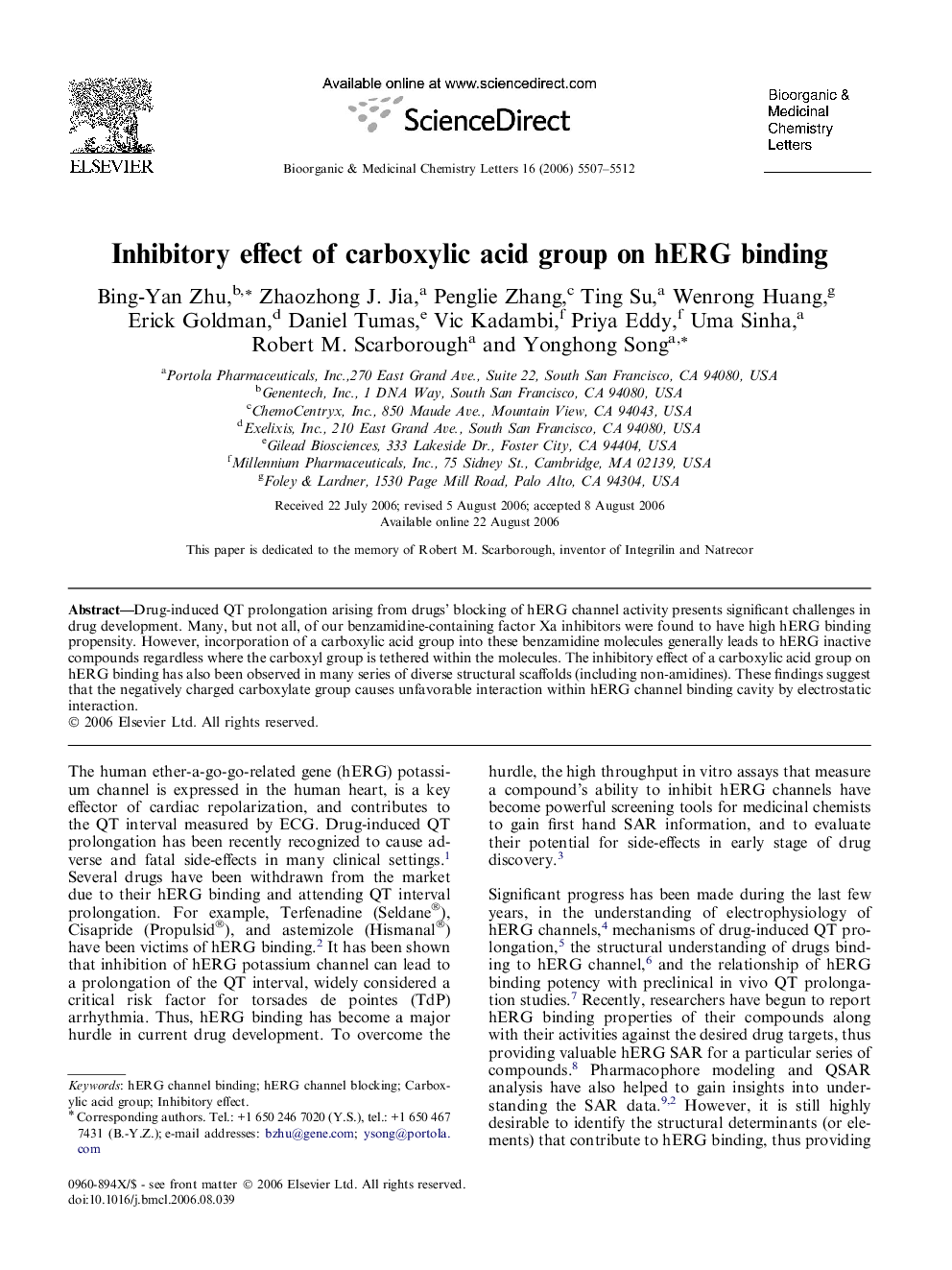| Article ID | Journal | Published Year | Pages | File Type |
|---|---|---|---|---|
| 1376485 | Bioorganic & Medicinal Chemistry Letters | 2006 | 6 Pages |
Drug-induced QT prolongation arising from drugs’ blocking of hERG channel activity presents significant challenges in drug development. Many, but not all, of our benzamidine-containing factor Xa inhibitors were found to have high hERG binding propensity. However, incorporation of a carboxylic acid group into these benzamidine molecules generally leads to hERG inactive compounds regardless where the carboxyl group is tethered within the molecules. The inhibitory effect of a carboxylic acid group on hERG binding has also been observed in many series of diverse structural scaffolds (including non-amidines). These findings suggest that the negatively charged carboxylate group causes unfavorable interaction within hERG channel binding cavity by electrostatic interaction.
Graphical abstractIncorporation of a carboxylic acid group into our hERG active molecules generally leads to hERG inactive compounds regardless where the carboxyl group is tethered within the molecules. The inhibitory effect of a carboxylic acid group on hERG binding has also been observed in many series of diverse structural scaffolds. These findings suggest that the negatively charged carboxylate group causes unfavorable interaction within hERG channel binding cavity by electrostatic interaction.Figure optionsDownload full-size imageDownload as PowerPoint slide
